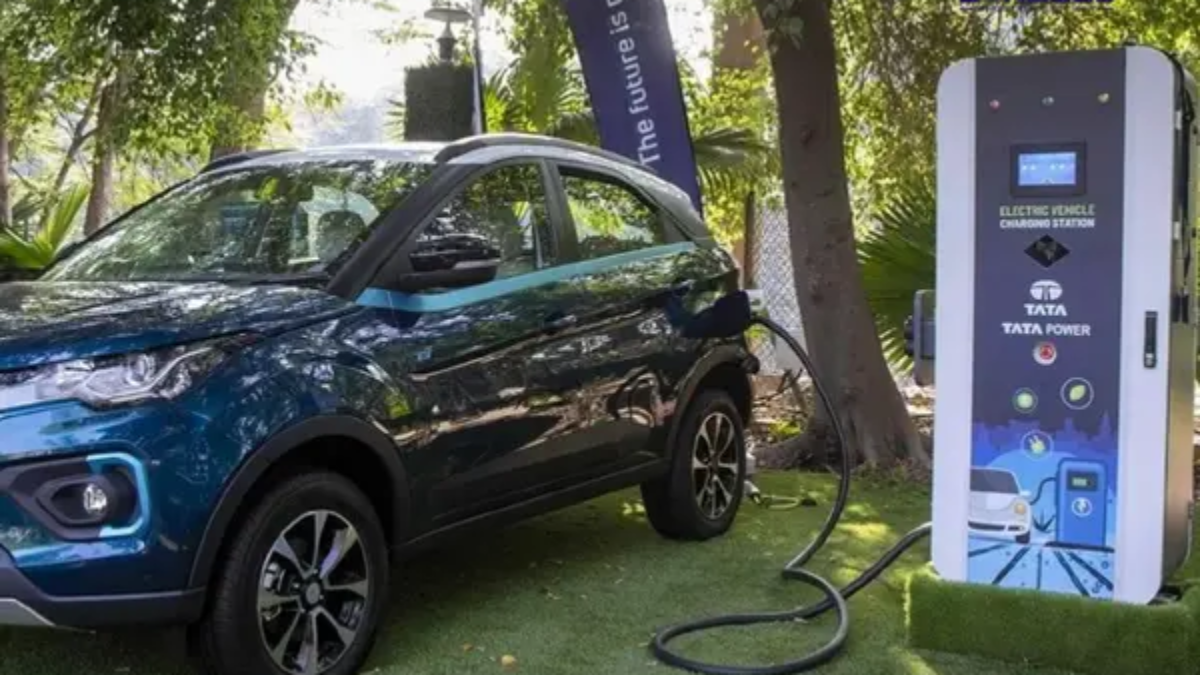Global case studies demonstrate that encouraging an approximate 20% adoption rate of EVs is beneficial
It would be great if this were also the case in India, according to Balaje Rajan, Chief Strategy Officer of Tata Passenger Electric Mobility (TPEM), in an interview with ETAuto.
New Delhi: Major automaker Tata Motors supports government assistance in the form of incentives or subsidies until the electric vehicle (EV) market reaches a certain threshold.
According to international case studies, it is undoubtedly beneficial to encourage EV adoption by around 20%. According to Balaje Rajan, Chief Strategy Officer of Tata Passenger Electric Mobility (TPEM), it would be beneficial if this were also the case in India.
What we observe is that consumer interest is essentially fixed until we hit 20% EV adoption. It guarantees sufficient market momentum and scalability,” he remarked.
The Chinese government has been subsidizing EV manufacturers since 2009 so they can use their products in taxis, public transportation, and retail stores. As the EV market grew, purchase subsidies for EV owners were reduced by the end of 2022.
Unfortunately, Germany’s government permitted corporate EV subsidies to expire at the beginning of September 2023 after adopting a revised budget, and in mid-December, it abruptly ended a consumer support program.
Kamran Rizvi, Secretary, of the Ministry of Heavy Industries, spoke at the 63rd SIAM Convention last year about the role of government support in the form of subsidies under the FAME initiative. He claimed that although China and the UK are cutting back on or eliminating their EV subsidies, India is still increasing its financial support for the EV sector.
Nonetheless, a business model devoid of subsidies was also promoted, encouraging the industry to grow as a whole. As part of its push for clean mobility, the government is also encouraging the deployment of hydrogen technologies.
“At some point, these schemes will come to an end,” remarked the politician.
By 2030, India wants to have thirty percent of its cars electrified.
In CY2023, 72,321 electric four-wheelers were registered, compared to 32,260 in CY2022, according to VAHAN data, which displays vehicle registration in India. In India, less than 2% of passenger cars are electric, despite growth in this area.
With 69,153 EV sales in CY2023, market leader Tata Motors had a 59% increase in yearly growth over 43,451 sales in CY2022.
The Nexon, Tigor (and Xpres-T EV for fleet buyers), Tiago, and Punch are its current four all-electric vehicles.
Despite the company’s strong support for EVs, Tata forecasts that “alternative fuel) technologies and category convergence with EVs to make ICE a little bit more benign, for whatever future ICE continues to share with EVs.”
Tata’s strategy to encourage the expansion of the ecosystem for charging:
In addition to aiming to sell more than 75,000 EVs in FY24, Tata Motors is attempting to become a unified player to meet the demands of consumers for charging infrastructure.
Our goal is to offer a single point of discovery solution and we support transparent collaboration. We have decided to act as an aggregator for our users, obtaining APIs from the top charge point operators (CPOs) in India, according to Rajan.
Based on its telemetry data, the automaker conducted an internal analysis and discovered that more than 65% of the Indian National Highways network offers chargers every 100 kilometers near highway food courts.
On the other hand, it is not well-known or visible.
Rajan highlighted the statistic and said, “There are over 7000 chargers that the public can access today all across India, compared to only about 5900 CNG stations.”
The Nexon manufacturer inked memorandums of understanding (MOUs) with Bharat Petroleum, Chargezone, Zeon, Glida, and Statiq, among the other five CPOs, in December. Along with providing insights on how the chargers are being used to better understand and improve the customer experience, TPEM is helping the five companies install chargers at the locations that their electric vehicle owners use the most. Additionally, it is investigating the potential for introducing a smart payment gateway via co-branded RFID cards, which will facilitate payments for Tata EV owners.

